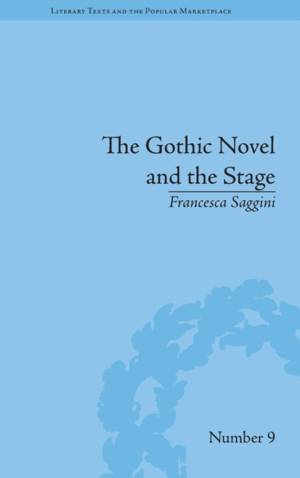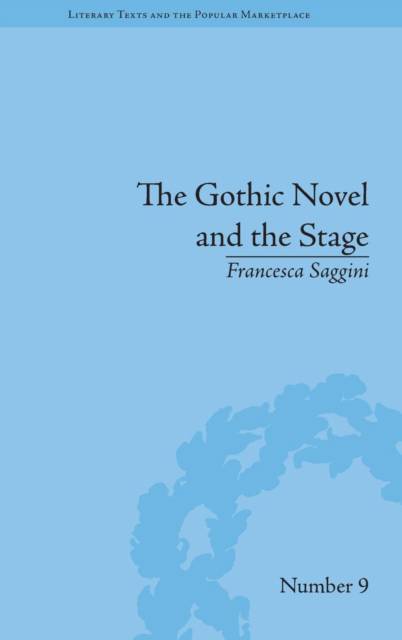
- Retrait gratuit dans votre magasin Club
- 7.000.000 titres dans notre catalogue
- Payer en toute sécurité
- Toujours un magasin près de chez vous
- Retrait gratuit dans votre magasin Club
- 7.000.0000 titres dans notre catalogue
- Payer en toute sécurité
- Toujours un magasin près de chez vous
Description
In this ground-breaking study Francesca Saggini explores the relationship between the late eighteenth-century novel and the theatre, arguing that the implicit theatricality of the Gothic novel made it an obvious source from which dramatists could take ideas. Similarly, elements of the theatre provided inspiration to novelists.
Saggini opens her study with a very useful and persuasive overview of the themes and forms of Gothic drama. In her view, stage appropriation is the textual threshold in which novelistic and dramatic/ performative texts overlap on and disseminate through each other. She examines in details the use of three specific aspects of Gothic dramatic language as recorded by both novel and drama: music, lighting, and scene design. The following chapters, informed by semiotic and narrative theory, closely examine the stage appropriations respectively in and of the Gothic novel, particularly, though not exclusively, the representation of the supernatural in Ann Radcliffe and Matthew G. Lewis. Boaden's successful Gothic drama Fontainville Forest challenges a central aspect of Radcliffe's poetics: her reliance on the so-called explained supernatural and puts it context by looking at contemporary stage presentations of the supernatural as offered for instance in Hamlet. The final part of the study frames Lewis's representation of the supernatural in The Monk within the contemporary mechanics of staging and discusses the novel in relation to contemporary stage presentation and in the context of Romantic harlequinades and spectacular visual exhibits.
Saggini makes a convincing argument for a transmedial and highly cooperative reading of Gothic texts and spectacles. Her approach does not seek to displace the novel or 'the text' from modern perceptions of the Gothic, but wants to open the genre to plural and anti-hierarchical forms of reading and to recognise its resourcefulness in appropriating theatrical techniques. The concept of 'stage appropriation' gives equal epistemological status to both verbal and non-verbal sign system, and this strategy allows for a holistic approach to the Gothic and an analysis of several literary-cultural formations as correlated, rather than discrete.
Spécifications
Parties prenantes
- Auteur(s) :
- Editeur:
Contenu
- Nombre de pages :
- 310
- Langue:
- Anglais
- Collection :
Caractéristiques
- EAN:
- 9781848934146
- Date de parution :
- 01-05-15
- Format:
- Livre relié
- Format numérique:
- Genaaid
- Dimensions :
- 163 mm x 236 mm
- Poids :
- 589 g

Les avis
Nous publions uniquement les avis qui respectent les conditions requises. Consultez nos conditions pour les avis.






